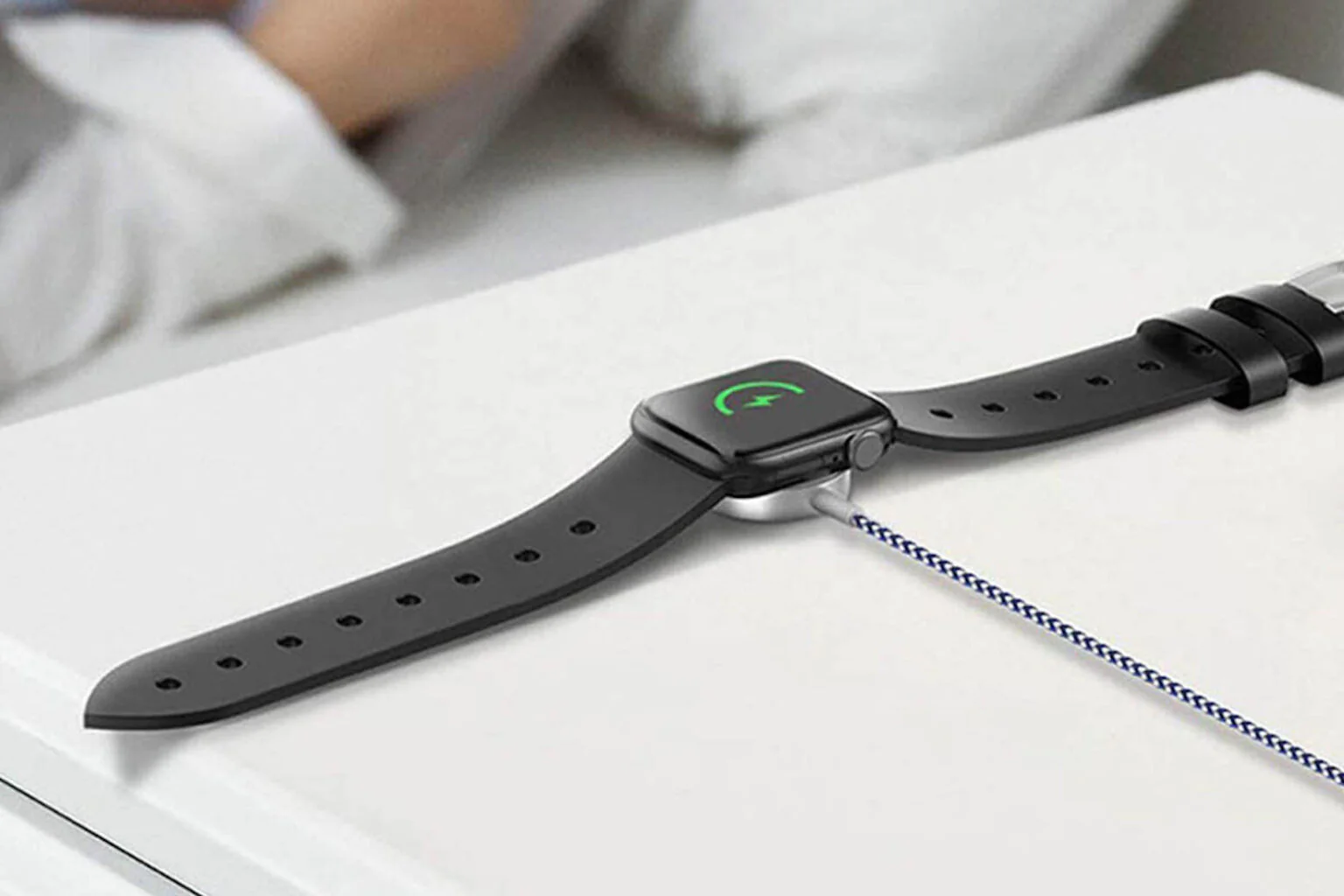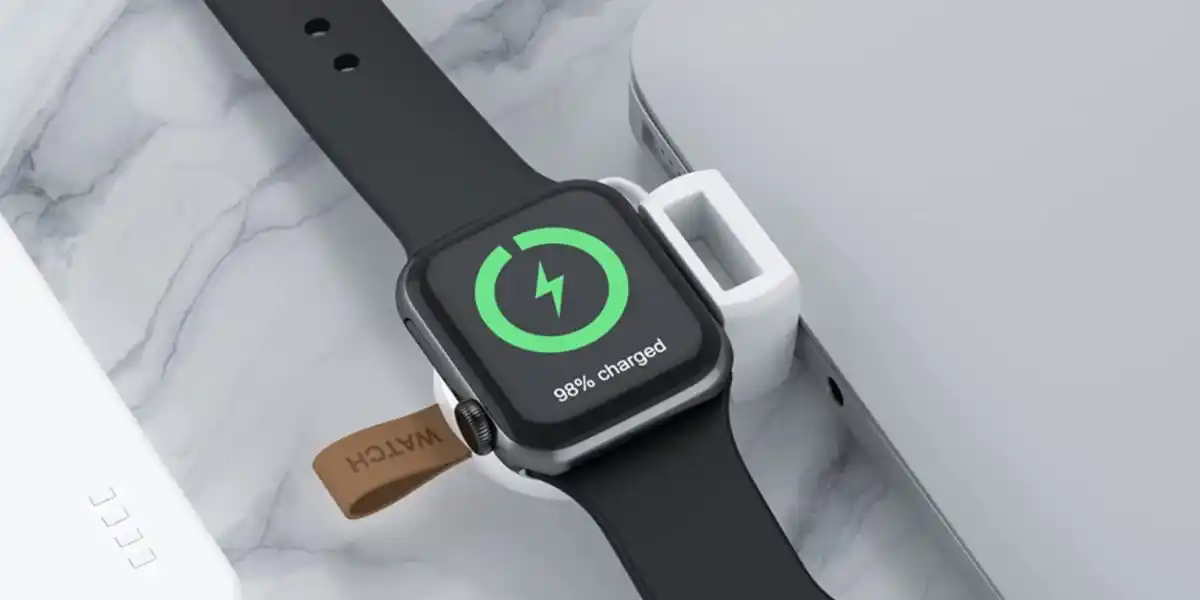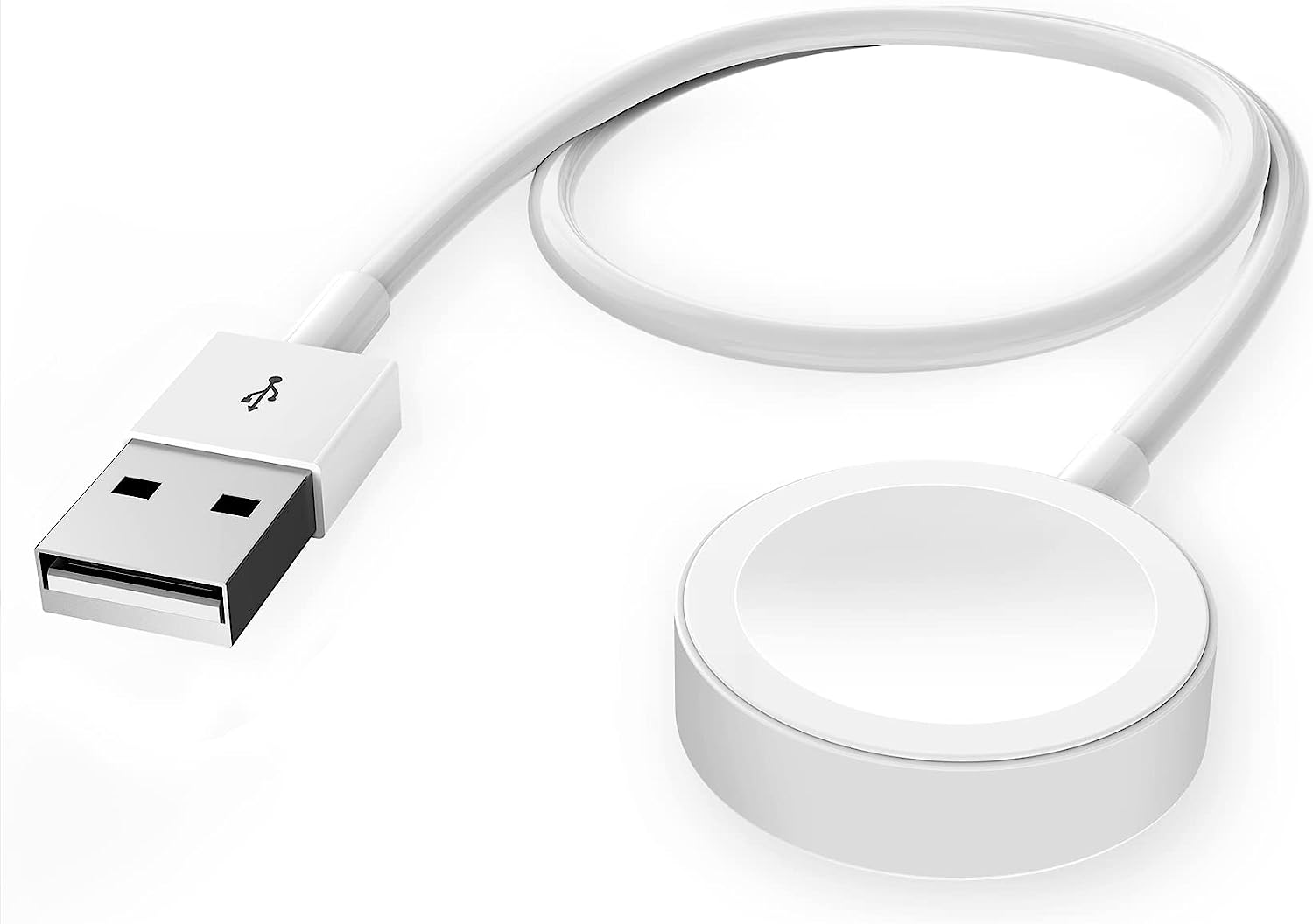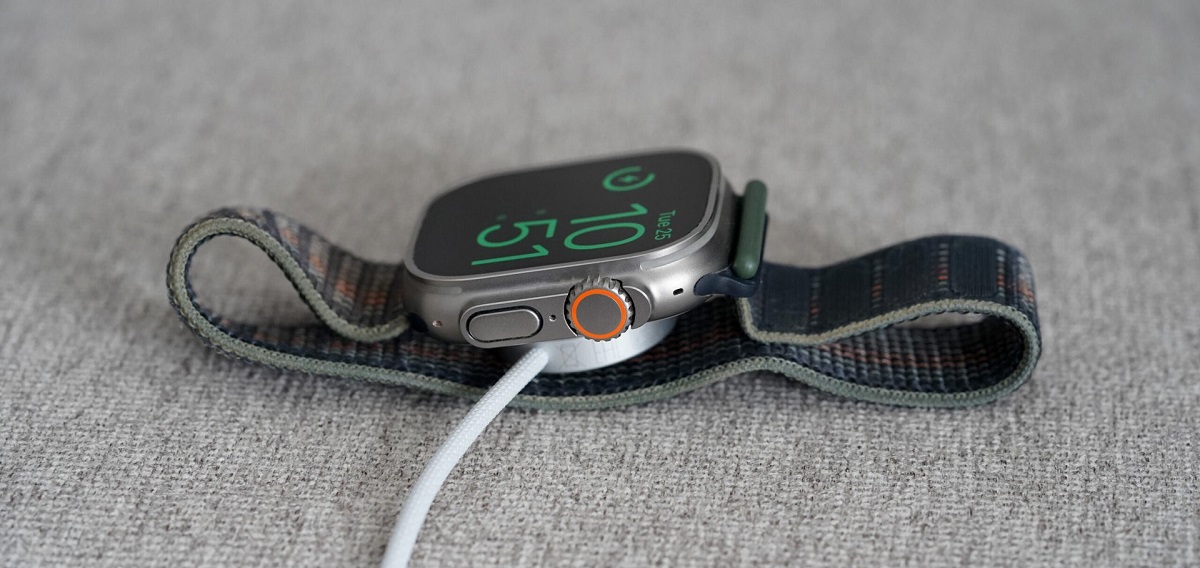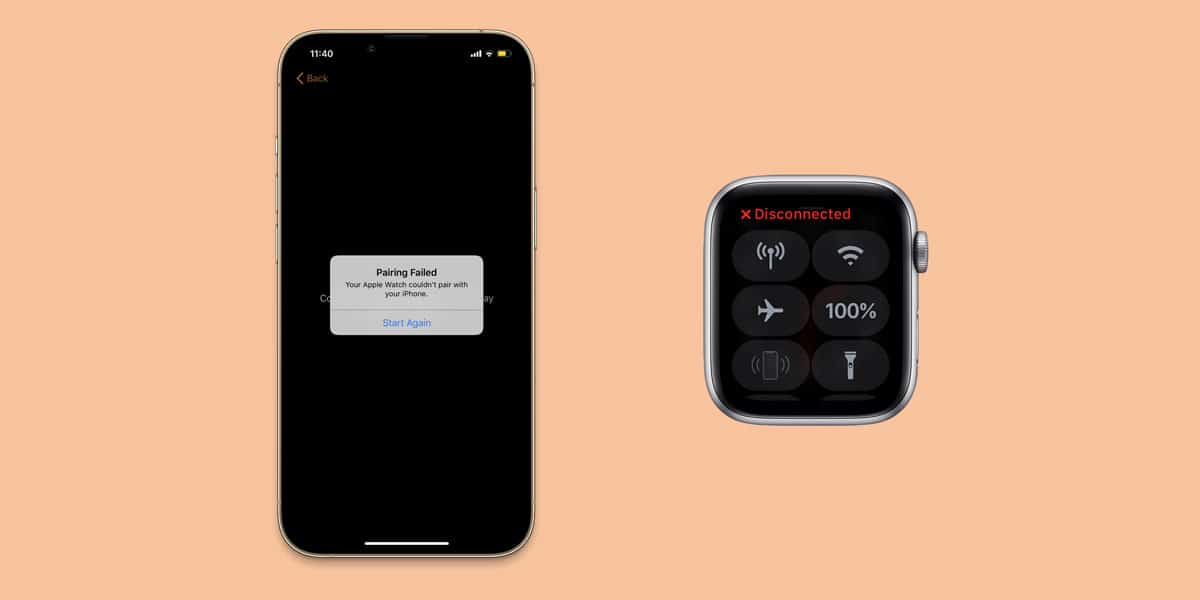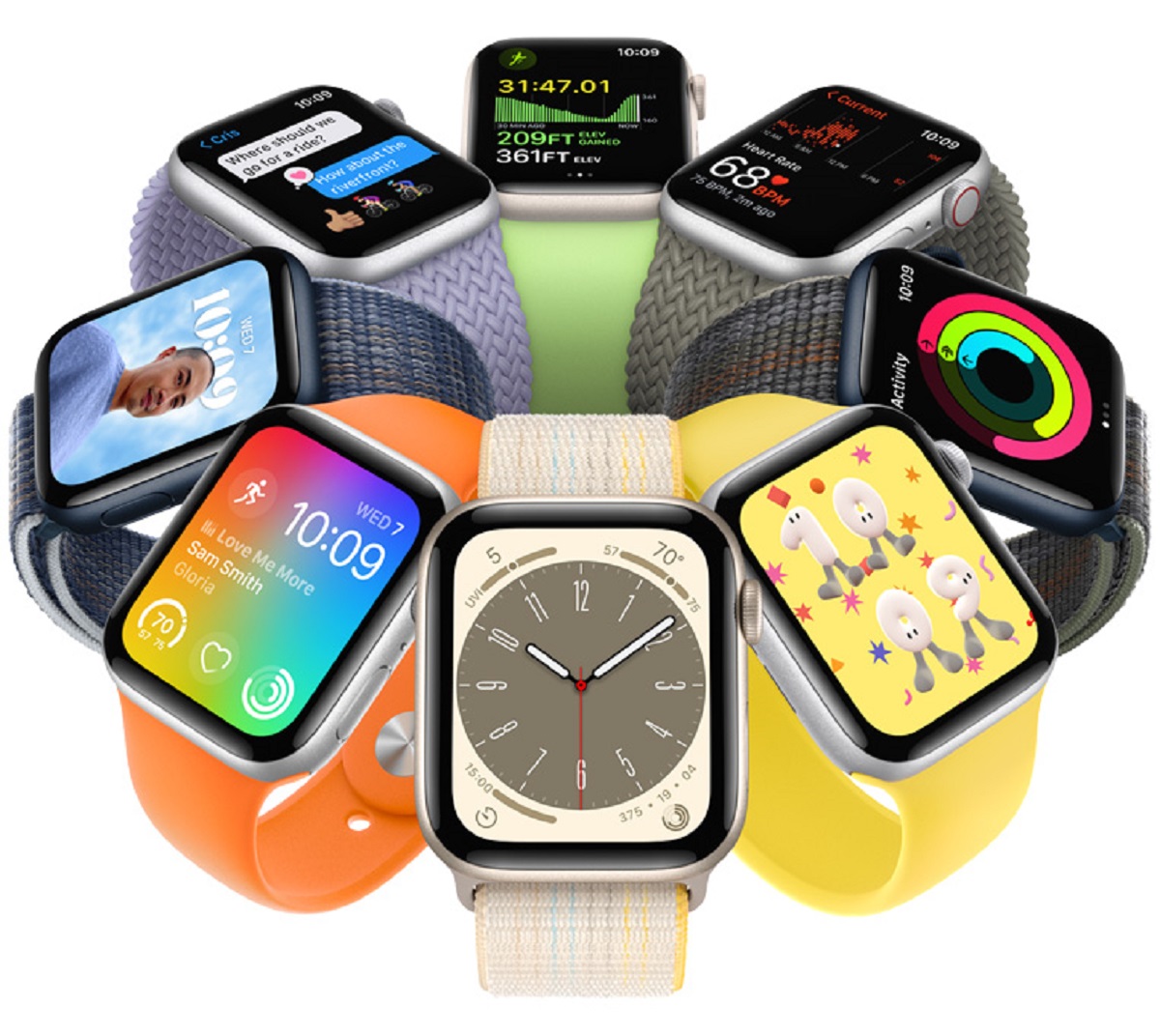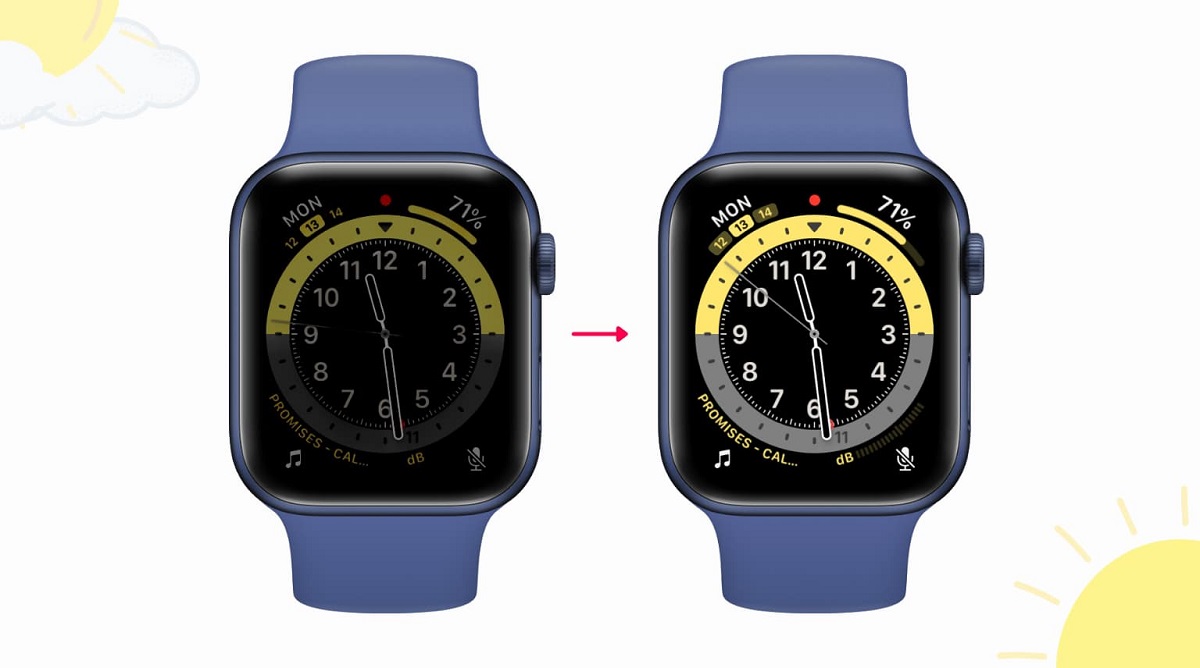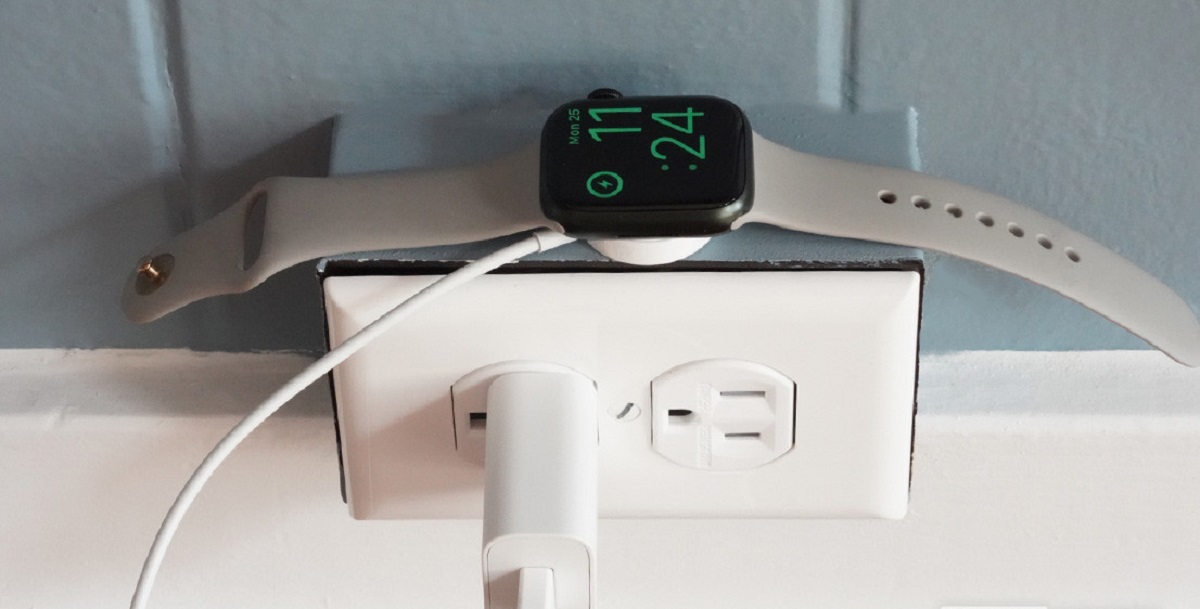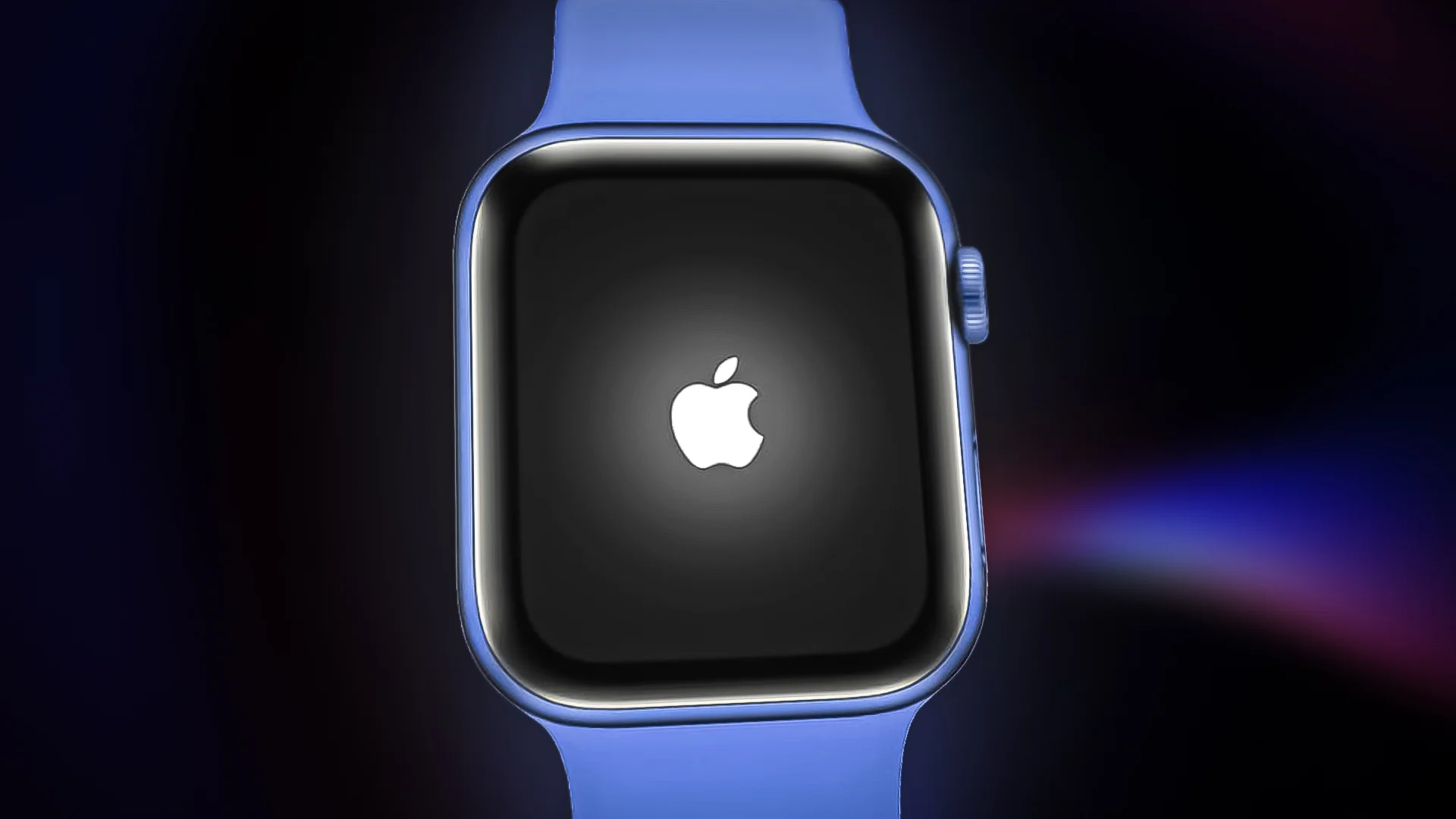Introduction
When it comes to keeping your Apple Watch charged and ready for use, there can be some confusion about how often you should charge it. With its sleek design and impressive features, the Apple Watch has quickly become a must-have accessory for many tech-savvy individuals. However, ensuring that your Apple Watch has enough battery life to get you through the day requires careful planning and consideration.
There are several factors that come into play when determining how often you should charge your Apple Watch. These include the specific model you own, your usage patterns, and the activities you engage in on a daily basis. By understanding these factors and following a few charging strategies, you can effectively maintain a healthy battery life for your Apple Watch.
Apple has provided some official recommendations on how to maximize the battery life of your Apple Watch. Their recommendations take into account the unique power requirements of the different Apple Watch models and provide guidance on charging frequency and duration. By following these recommendations, you can ensure optimal battery performance and longevity.
Additionally, your personal usage patterns and daily activities play a significant role in determining how often you should charge your Apple Watch. Depending on the features you frequently use, such as fitness tracking, notifications, or music playback, you may need to charge your Apple Watch more often. Engaging in activities that require a lot of power, like GPS tracking or streaming apps, can also impact your Apple Watch’s battery life.
In this article, we will explore Apple’s official recommendations for charging your Apple Watch and discuss the battery life of different Apple Watch models. We will also provide tips for maximizing battery life and strategies for charging in various scenarios. Additionally, we will cover methods for tracking battery usage to help you better understand your consumption patterns.
Factors to Consider
When determining how often to charge your Apple Watch, there are several important factors to consider. These factors will help you understand the unique power requirements of your Apple Watch and make informed decisions regarding its charging needs.
First and foremost, the specific model of your Apple Watch will play a significant role in determining its battery life and charging frequency. Each Apple Watch model has different hardware specifications, including the size and capacity of its battery. Generally, newer Apple Watch models tend to have improved battery life compared to their predecessors. Therefore, if you own a more recent Apple Watch model, you may need to charge it less frequently than if you have an older model.
Another factor to consider is your personal usage patterns. The features and functions you frequently use on your Apple Watch will impact its battery life. For example, if you use your Apple Watch extensively for fitness tracking or receive a high volume of notifications, you may drain the battery more quickly. Similarly, activities that require a lot of power, such as GPS tracking during a workout or streaming music or videos, can significantly impact the battery life of your Apple Watch.
It’s also important to take into account your daily activities. If you lead an active lifestyle and engage in activities that put additional stress on your Apple Watch, such as swimming or outdoor workouts, you may need to charge it more frequently. Exposing your Apple Watch to extreme temperatures or subjecting it to physical shocks can also impact its battery performance.
Lastly, it’s worth considering your charging habits and strategies. Charging your Apple Watch overnight while you sleep is a common practice for many users, ensuring that the watch is fully charged and ready to go in the morning. However, if you find that your Apple Watch’s battery drains quickly during the day, you may need to incorporate additional charging sessions or explore more efficient charging practices.
By taking all these factors into account, you can develop a better understanding of how often you should charge your Apple Watch. This knowledge will help you make informed decisions about charging frequency and duration, ensuring that your Apple Watch remains powered up and ready to assist you throughout the day.
Apple’s Official Recommendations
Apple provides official recommendations to help users optimize the battery life and charging routine of their Apple Watches. These guidelines are designed to ensure that your watch performs at its best and maintains a healthy battery over time.
According to Apple, it is generally recommended to charge your Apple Watch every night. This allows you to start each day with a fully charged watch and ensures that you won’t run out of power during your daily activities. By charging overnight, you can take advantage of the watch’s built-in power management features, which help prolong battery life and prevent overcharging.
Furthermore, Apple suggests using the 5W USB Power Adapter that comes with your Apple Watch or a similarly powered adapter for charging. Charging your Apple Watch using a USB port on a computer or other low-power source may result in slower charging times or insufficient power delivery. Therefore, it’s advised to use the official power adapter for optimal charging performance.
It’s worth noting that Apple does not recommend exposing your Apple Watch to extremely high or low temperatures. Extreme temperatures can affect the battery’s performance and longevity. It’s recommended to avoid charging your Apple Watch in very hot or cold environments and to store it within the recommended temperature range of -4°F to 113°F (-20°C to 45°C).
Lastly, Apple advises users to update their Apple Watch to the latest software version available. Software updates often include optimizations and bug fixes that can improve battery life and overall performance. Keeping your watch up to date will ensure that you benefit from any battery-related enhancements released by Apple.
By following these official recommendations from Apple, you can ensure that your Apple Watch remains in top condition and provides you with reliable battery performance. Charging your watch every night, using the right power adapter, avoiding extreme temperature conditions, and keeping your software updated will help you make the most of your Apple Watch.
Battery Life of Apple Watch Models
The battery life of your Apple Watch can vary depending on the specific model you own. Apple has made significant strides in improving battery performance with each new iteration of the Apple Watch. Let’s take a closer look at the battery life of some of the popular Apple Watch models:
- Apple Watch Series 6: The latest Apple Watch model boasts an impressive battery life. With regular use, it can provide up to 18 hours of runtime on a single charge. This includes typical activities such as receiving notifications, using apps, and engaging in workouts. The Series 6 also supports fast charging, allowing you to go from 0% to 80% charge in just about an hour.
- Apple Watch SE: The Apple Watch SE offers similar battery life to the Series 6, providing up to 18 hours on a single charge. This makes it a reliable companion for a full day of usage without needing to be plugged in. The SE does not support fast charging, but it charges at a consistent and reasonable pace.
- Apple Watch Series 5: The Series 5 introduced an always-on display feature while maintaining a commendable battery life. It can last up to 18 hours with regular use, including the always-on display functionality. This improvement allowed users to easily view the time and other important information without having to raise or tap the display.
- Apple Watch Series 4: The Series 4 offered a noticeable leap in battery performance compared to its predecessors. It could provide up to 18 hours of usage, even with the added features like electrocardiogram (ECG) and fall detection. This model also introduced optimized charging, which helps prevent overcharging and extends the overall battery lifespan.
It’s important to note that battery performance can vary depending on individual usage patterns and settings. Engaging in activities that require more power, such as continuous GPS tracking or streaming music, will drain the battery faster. Adjusting settings like screen brightness, app notifications, and background refresh can also impact battery life.
Each Apple Watch model comes with its own unique battery life, but all models are designed to provide ample power for a full day of use. With regular charging and efficient management of settings, you can ensure that your Apple Watch meets your needs throughout the day and doesn’t leave you stranded with a dead battery.
Usage Patterns and Daily Activities
How often you should charge your Apple Watch depends on your usage patterns and the activities you engage in on a daily basis. The features and functions you frequently use can have a significant impact on the battery life of your Apple Watch.
If you are an active individual who utilizes the fitness tracking capabilities of your Apple Watch regularly, you may find that your watch requires more frequent charging. Features like continuous heart rate monitoring, GPS tracking during workouts, and streaming workout videos can quickly drain the battery. In such cases, it may be necessary to charge your Apple Watch more frequently, perhaps even on a daily basis, to ensure it has enough power to support your workout routines.
Similarly, if you receive a high volume of notifications throughout the day, such as text messages, emails, and app notifications, your Apple Watch may require more frequent charging. Constantly receiving and processing these notifications can consume energy, especially if your watch is set to mirror your iPhone’s notifications. In such cases, it’s advisable to keep your Apple Watch charged throughout the day to avoid running out of battery and missing important notifications.
Additionally, activities that require a lot of power, such as streaming music or videos directly from your Apple Watch, can drain the battery quickly. If you enjoy using your Apple Watch as a standalone device for entertainment purposes, you may need to charge it more often to ensure uninterrupted usage.
It’s worth mentioning that certain daily activities can also impact the battery life of your Apple Watch. Exposure to extreme temperatures, both hot and cold, can affect battery performance. For example, if you are out in freezing temperatures or under direct sunlight for extended periods, it may be necessary to charge your Apple Watch more frequently to maintain optimal functionality.
Understanding your personal usage patterns and considering your daily activities will help you determine how often you should charge your Apple Watch. If you engage in power-intensive activities or rely heavily on your Apple Watch throughout the day, charging it more frequently will ensure that it remains operational and ready to perform when you need it most.
Charging Strategies for Different Scenarios
Depending on your lifestyle and daily routines, you may find yourself in various scenarios where charging your Apple Watch differs from the typical overnight charging routine. Here are some charging strategies for different scenarios to ensure your Apple Watch remains powered up:
1. Overnight Charging: The most common and convenient charging scenario for your Apple Watch is overnight charging. This allows you to start each day with a fully charged watch. Simply place your Apple Watch on its charging dock or use a wireless charger, and let it charge overnight while you sleep. This ensures that your Apple Watch is ready to go when you wake up in the morning.
2. Quick Charging: If you find that your Apple Watch is running low on battery during the day and you need a quick power boost, you can take advantage of its fast charging capabilities. Connect it to its charger for just 15 to 30 minutes, and you can quickly add enough charge to last you through the remainder of the day. This is especially useful when you have a short break or downtime.
3. Charging at Work: If you spend a significant amount of time at your workplace and have access to a computer or USB port, consider charging your Apple Watch during the day. Simply connect it to your computer or a USB power source using a magnetic charging cable. This way, you can ensure that your Apple Watch remains charged while you work, minimizing the risk of running out of battery during important meetings or tasks.
4. Charging on the Go: For individuals who are constantly on the move and away from traditional charging sources, portable chargers can be a lifesaver. Invest in a portable charger specifically designed for the Apple Watch, or use a power bank with a USB port and your magnetic charging cable. This allows you to charge your Apple Watch anywhere, ensuring that you have sufficient battery life regardless of your location or activities.
5. Power Reserve Mode: In extreme situations where charging options are limited or non-existent, you can activate Power Reserve mode on your Apple Watch. This mode significantly extends the battery life by disabling all non-essential features, essentially turning your Apple Watch into a traditional watch. Keep in mind that you’ll have limited functionality in this mode, but it can help conserve battery power when you need it most.
By incorporating these charging strategies into your routine, you can ensure that your Apple Watch remains adequately charged in different scenarios. Whether you’re charging overnight, using quick charging methods, taking advantage of charging opportunities at work, utilizing portable chargers on the go, or activating Power Reserve mode as a last resort, these strategies will help you make the most out of your Apple Watch’s battery life.
Tips for Maximizing Battery Life
To get the most out of your Apple Watch’s battery life, it’s important to adopt certain habits and make use of available settings that can help optimize its power consumption. Here are some tips for maximizing the battery life of your Apple Watch:
1. Adjust Screen Brightness: Lowering the screen brightness can have a significant impact on battery life. Consider reducing the screen brightness to a level that is comfortable for you while still ensuring readability. This can help conserve power throughout the day.
2. Enable Power Saving Mode: Activating Power Saving Mode on your Apple Watch can help extend battery life by disabling certain features. This mode turns off background app refresh, reduces haptic feedback intensity, and limits some visual effects. You can enable this mode by going to the Settings app on your Apple Watch and navigating to General > Power Saving Mode.
3. Manage App Notifications: Review and customize the notifications that come through to your Apple Watch. Having unnecessary or excessive notifications can drain your battery quickly. Choose only the apps and alerts that are essential to you and disable the ones that aren’t. You can manage app notifications from your iPhone’s Watch app under Notifications settings.
4. Use Wi-Fi Instead of Cellular: If your Apple Watch model has cellular capability, connecting to Wi-Fi instead of using cellular data can help conserve battery life. Wi-Fi consumes less energy compared to using cellular data, so consider connecting to known Wi-Fi networks when available.
5. Limit Background App Refresh: Some apps on your Apple Watch continue to update in the background, even when you’re not actively using them. Managing which apps are allowed to refresh in the background can help save battery life. Go to the Settings app on your Apple Watch and navigate to General > Background App Refresh to customize this setting.
6. Use Airplane Mode Sparingly: Enabling Airplane mode on your Apple Watch can help conserve battery life, especially in situations with poor signal reception. However, keep in mind that enabling Airplane mode will disable key features like notifications and phone calls. Use this mode sparingly and only when necessary.
7. Turn Off Always-On Display: If you have an Apple Watch model with an always-on display, disabling this feature can help preserve battery life. While the always-on display is convenient, it does consume more power. You can adjust this setting by going to the Settings app on your Apple Watch and navigating to Display & Brightness.
8. Update Software: Keeping your Apple Watch software up to date is essential for maximizing battery life. Apple often releases software updates that include optimizations and bug fixes, which can improve battery performance. Make sure to install updates as they become available.
By incorporating these tips into your Apple Watch usage, you can extend the battery life and ensure that your watch remains powered up throughout the day. Adjusting screen brightness, enabling Power Saving Mode, managing app notifications, using Wi-Fi instead of cellular data, limiting background app refresh, using Airplane mode selectively, turning off the always-on display, and keeping your software up to date will help you make the most out of your Apple Watch’s battery.
Methods for Tracking Battery Usage
Tracking the battery usage of your Apple Watch can help you understand your consumption patterns and make informed decisions regarding charging frequency and usage habits. Here are some methods for tracking the battery usage of your Apple Watch:
1. Battery Usage App: The Apple Watch has a built-in Battery Usage app that provides information about how your watch’s battery has been consumed over the past 24 hours or the past 7 days. This app shows the percentage of battery used by different apps and features on your watch, allowing you to identify any power-hungry apps or activities.
2. iPhone’s Battery Usage: You can also track your Apple Watch’s battery usage through your paired iPhone. Open the Apple Watch app on your iPhone, go to the My Watch tab, and navigate to General > Usage > Battery. Here, you can view a breakdown of battery usage by different apps and features, similar to the Battery Usage app on the watch itself.
3. Notifications: The Apple Watch automatically sends battery notifications when the battery level reaches a certain percentage, typically 10% and 20%. These notifications serve as a reminder to charge your watch or optimize its usage to prolong battery life. Pay attention to these notifications and take appropriate actions accordingly.
4. Battery Complications: You can add battery complications to your Apple Watch face to have a quick visual representation of your battery level. There are various battery complications available, allowing you to monitor your watch’s battery life at a glance. Simply customize your watch face and add the battery complication from the options available.
5. Third-Party Battery Tracker Apps: There are several third-party apps available in the App Store that offer more advanced battery tracking features for your Apple Watch. These apps often provide additional information and insights into your battery usage, such as estimated battery life remaining and historical usage trends. Explore the App Store and find a battery tracker app that suits your preferences and needs.
By utilizing these methods for tracking battery usage, you can gain valuable insights into how your Apple Watch’s battery is being consumed. Whether you use the built-in Battery Usage app, check battery usage on your iPhone, pay attention to notifications, add battery complications to your watch face, or explore third-party battery tracker apps, tracking your battery usage will help you optimize your Apple Watch’s battery life and ensure it lasts throughout the day.
Conclusion
When it comes to charging your Apple Watch, understanding factors such as the specific model you own, your usage patterns, and daily activities is crucial. By following Apple’s official recommendations, considering battery life specifications of different Apple Watch models, and implementing the right charging strategies, you can ensure that your Apple Watch stays powered up and ready for use.
Maximizing battery life can be achieved by adjusting settings like screen brightness, enabling power-saving mode, managing app notifications, utilizing Wi-Fi instead of cellular data, and keeping your software up to date. These tips help optimize battery performance, allowing you to make the most of your Apple Watch throughout the day.
Tracking battery usage through the built-in Battery Usage app, iPhone’s battery settings, or third-party battery tracker apps provides valuable insights into your consumption patterns. By monitoring your Apple Watch’s battery usage, you can identify power-draining apps or activities and make informed decisions about charging frequency and usage habits.
In conclusion, understanding how often to charge your Apple Watch and implementing effective strategies to maximize battery life is essential for an optimal user experience. By following the recommendations, adjusting settings, tracking battery usage, and charging strategically, you can ensure that your Apple Watch remains powered up and ready to assist you in your daily activities.







